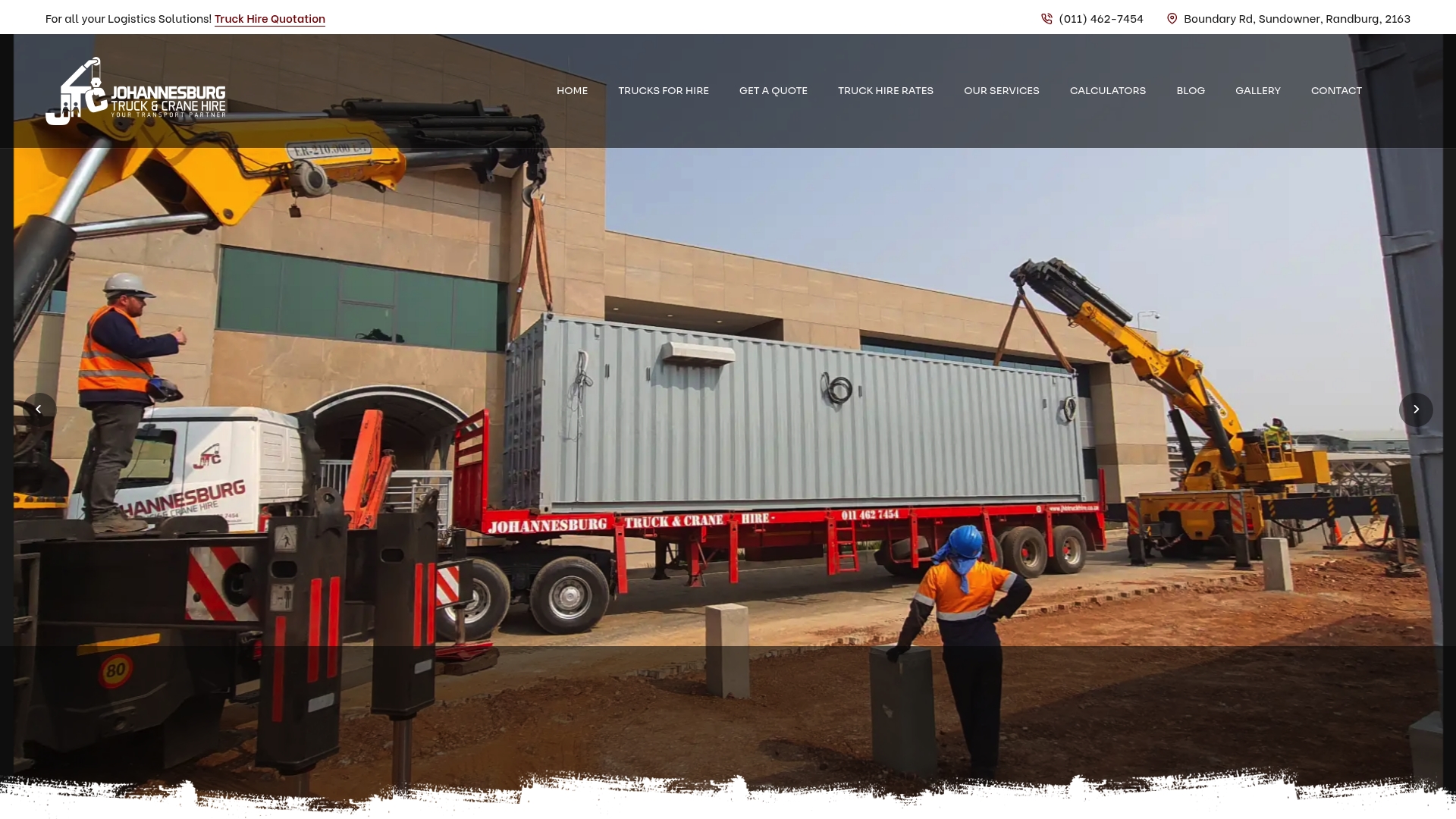
Flatbed truck safety will hit new heights in 2025 as companies face tighter regulations and mounting pressures to keep roads accident free. Here is something that might make you pause. Mechanical failures cause more than 29 percent of trucking accidents, with worn brakes and bad tires being the worst offenders. It turns out the biggest threat often comes before the truck even leaves the lot, not while navigating busy highways.

Pre-Trip Inspections For Flatbed Safety
Understanding The Comprehensive Vehicle Check
Documentation And Accountability
Best Practices For Securing Cargo Loads
Understanding Load Securement Regulations
Strategic Load Securing Methods
Risk Mitigation And Compliance
Driver Safety Measures And Industry Regulations
Regulatory Compliance Framework
Weather And Road Condition Precautions
Understanding Weather-Related Risks
Vehicle Preparation And Adaptation
| Takeaway | Explanation |
|---|---|
| Conduct Thorough Pre-Trip Inspections | Comprehensive checks of structural integrity, securing mechanisms, and tire condition are vital to prevent accidents or mechanical failures during transit. |
| Adhere to Load Securement Regulations | Understanding and implementing load securement principles, including weight distribution and appropriate restraint techniques, is crucial for avoiding dislodgment or spillage. |
| Implement Health and Safety Protocols | Mandatory rest periods, fatigue management programs, and addressing mental health are essential for maintaining driver safety and overall operational effectiveness. |
| Prepare for Weather and Road Conditions | Systematic vehicle checks and adaptive driving strategies, such as adjusting speed and increasing following distance, are key for safely navigating challenging environments. |
Flatbed truck safety begins long before the wheels start rolling. Pre-trip inspections are the critical first line of defense against potential accidents and mechanical failures. Professional drivers understand that a thorough inspection can mean the difference between a safe journey and a catastrophic incident.

A robust pre-trip inspection goes far beyond a quick glance. According to the Road Traffic Management Corporation, mechanical failures account for over 29% of trucking accidents, with brake failures and defective tyres being primary culprits. This statistic underscores the absolute necessity of a meticulous examination.
Drivers must systematically inspect multiple vehicle components:
Structural Integrity: Check flatbed surfaces for any cracks, warping, or structural damage that could compromise load stability.
Securing Mechanisms: Verify all tie-downs, chains, and load restraints are in perfect working condition.
Tire Condition: Examine tread depth, sidewall integrity, and proper inflation across all wheels.
The South African National Road Traffic Act mandates comprehensive pre-trip exterior inspections. This legal requirement ensures vehicles are roadworthy and safe before entering public roadways. Professional drivers must document their inspections, creating a verifiable record of vehicle condition.
Key inspection areas include:
Brake system functionality
Lighting and electrical systems
Suspension components
Cargo securing equipment
Fluid levels and potential leaks
Professional drivers recognize that pre-trip inspections are more than a routine task. As recommended by the Health and Safety Authority, daily vehicle safety checks ensure vehicles are fit for purpose at the start of each working day.
Effective documentation involves:
Detailed written inspection logs
Time-stamped checklists
Immediate reporting of potential issues
Photographic evidence of vehicle condition
By implementing rigorous pre-trip inspection protocols, drivers transform potential risk into preventative safety. Each methodical check represents a commitment to protecting not just the vehicle and its cargo, but also the lives of everyone sharing the roadway.
Remember: A few minutes of careful inspection can prevent hours of potential disaster.
To help clarify the key vehicle components and documentation steps essential for pre-trip inspections, the following table summarizes the inspection areas and associated documentation methods.
| Inspection Area | What to Check | Documentation Recommended |
|---|---|---|
| Structural Integrity | Surface cracks, warping, other damage | Written log, photo evidence |
| Securing Mechanisms | Tie-downs, chains, load restraints | Checklist, immediate reporting |
| Tire Condition | Tread depth, sidewall condition, proper inflation | Checklist, written log |
| Brake System | Full brake system functionality | Written log, time-stamped checklist |
| Lighting & Electrical | All lights and electrical components | Checklist, photo evidence if faulty |
| Suspension Components | Suspension wear or faults | Written log, immediate reporting |
| Cargo Securing Equipment | Validity and condition of cargo restraints | Written log, checklist |
| Fluid Levels/Leaks | Oil, coolant, hydraulic fluid, leaks | Written log |

Securing cargo loads on flatbed trucks represents a critical safety challenge that demands precision, knowledge, and strict adherence to regulatory standards. Professional drivers and logistics operators must understand that improper load securement can lead to catastrophic accidents, potential legal consequences, and significant financial losses.
The South African Bureau of Standards has established comprehensive guidelines through SANS 10187 Parts 1 to 9, which outline specific requirements for load securement. According to Regulation 246 of the National Road Traffic Act, no vehicle shall operate carrying goods unless they are safely contained or securely fastened to prevent dislodging or spillage.
Critical load securement principles include:
Weight Distribution: Ensure even load distribution across the flatbed to maintain vehicle stability.
Proper Restraint Techniques: Use appropriate tie-downs, chains, and straps rated for the specific cargo weight.
Load Height Considerations: Maintain loads within legal height restrictions to prevent overhead clearance issues.
Professional load securement goes beyond basic attachment. Drivers must implement multiple strategies to ensure cargo remains stable during transportation. The Arrive Alive Transport Safety Guidelines emphasize that operators are responsible for conducting thorough pre-trip inspections and maintaining vehicle roadworthiness.
Effective load securing techniques include:
Using multiple securing points for heavy or irregularly shaped cargo
Implementing edge protection to prevent strap damage
Checking load tension periodically during transportation
Utilizing specialized securing equipment based on cargo type
Beyond physical securement, legal compliance plays a crucial role in cargo transportation safety. Operators must maintain a valid Certificate of Fitness (COF) and ensure all securing equipment meets regulatory standards. This involves regular equipment inspections, maintaining proper documentation, and training personnel in advanced load securement techniques.
Key compliance considerations include:
Regular equipment maintenance and replacement
Comprehensive driver training programs
Detailed documentation of load securing procedures
Understanding specific industry regulations for different cargo types
Successful cargo load securement requires a holistic approach combining technical knowledge, regulatory compliance, and a commitment to safety. Professional drivers who master these principles protect not just their cargo, but everyone sharing the roadway.
To provide a clear overview, the following table summarizes best practices, the purpose behind each, and the relevant regulation or guideline emphasized in the section.
| Best Practice | Purpose | Related Regulation/Guideline |
|---|---|---|
| Even Weight Distribution | Maintains vehicle stability | SANS 10187, National Road Traffic Act |
| Proper Restraint Techniques | Prevents dislodgment or spillage | SANS 10187, Reg. 246 National Road Traffic Act |
| Load Height Compliance | Prevents overhead clearance issues | National Road Traffic Act |
| Multiple Securing Points | Adds security for heavy/irregular cargo | Arrive Alive Transport Safety Guidelines |
| Edge Protection | Avoids strap/cargo damage | SANS 10187, Arrive Alive Guidelines |
| Periodic Tension Checks | Maintains securing integrity during transit | Arrive Alive Transport Safety Guidelines |
| Specialized Securing Equipment | Matches equipment to unique cargo needs | SANS 10187, National Road Traffic Act |
Driver safety represents the cornerstone of effective flatbed truck operations. Professional drivers must navigate complex regulatory landscapes while maintaining exceptional safety standards that protect themselves, their cargo, and other road users.
The National Land Transport Act provides a comprehensive legislative framework regulating transportation systems. According to the Road Traffic Management Corporation, driver safety extends far beyond basic vehicle operation.
Key regulatory focus areas include:
Driver Qualification: Mandatory professional driving permits
Medical Fitness: Regular health assessments
Training Requirements: Continuous professional development
Vehicle Roadworthiness: Strict maintenance and inspection protocols
The Department of Employment and Labour emphasizes employers’ critical responsibility in ensuring driver safety. This involves implementing comprehensive safety strategies that address multiple risk factors.
Essential safety protocols include:
Mandatory rest period regulations
Fatigue management programs
Distracted driving prevention strategies
Mental health support services
Modern flatbed truck operations leverage technology to enhance driver safety. Advanced telematics systems track driver behavior, vehicle performance, and potential risk indicators in real time. These technologies provide actionable insights that help prevent accidents and improve overall fleet safety.
Emergent safety monitoring techniques feature:
Continuous driving pattern analysis
Real-time performance feedback
Automated risk assessment mechanisms
Predictive maintenance alerts
Successful driver safety requires a holistic approach combining regulatory compliance, technological innovation, and a fundamental commitment to protecting human life. Professional drivers who embrace these principles become critical guardians of road safety.
Flatbed truck operations demand exceptional skill and adaptability when confronting varying weather and road conditions. Professional drivers must develop comprehensive strategies to navigate challenging environments while maintaining safety and cargo integrity.
According to the Road Traffic Management Corporation, drivers must exercise extreme caution during adverse weather. Arrive Alive highlights that wet road surfaces can cause significant hazards, particularly for large flatbed trucks with higher center of gravity.
Key weather-related risk factors include:
Reduced Visibility: Rain, fog, and dust storms impacting driver perception
Surface Traction: Wet and slippery road conditions
Wind Dynamics: Strong crosswinds affecting vehicle stability
Temperature Variations: Impact on vehicle performance and load security
The Western Cape Mobility Department recommends thorough vehicle preparation before challenging weather conditions. Drivers must systematically check and prepare multiple vehicle systems to ensure safe operation.
Critical preparation steps include:
Inspect and replace worn wiper blades
Check tyre tread depth and inflation
Verify all lighting systems function correctly
Ensure braking systems are fully operational
Test vehicle heating and defrosting mechanisms
Adaptive driving becomes crucial when confronting unpredictable road and weather conditions. Professional drivers must modify their approach to maintain safety and cargo integrity.
Recommended driving strategies involve:
Reducing vehicle speed during adverse conditions
Increasing following distance
Avoiding sudden steering or braking movements
Maintaining consistent and smooth acceleration
Using low gears when navigating challenging terrain
Successful navigation of weather and road challenges requires a combination of technical knowledge, vehicle preparation, and adaptive driving skills. Professional flatbed truck drivers who master these principles transform potential risks into manageable situations, protecting themselves, their cargo, and fellow road users.
A thorough pre-trip inspection should include checking structural integrity, securing mechanisms, tire condition, brake functionality, lighting systems, suspension components, and fluid levels. Documentation of these checks is also essential.
To secure cargo, follow load securement regulations by ensuring even weight distribution, using proper restraint techniques, and checking load height compliance. Utilize multiple securing points and edge protection to prevent damage during transportation.
Best practices include adhering to regulations regarding driver qualifications and health assessments, implementing mandatory rest periods, and utilizing advanced telematics for real-time performance monitoring of driving habits and vehicle conditions.
Drivers should prepare by inspecting wiper blades, checking tire tread depth and inflation, ensuring lighting systems function, and testing braking and heating mechanisms. Adjusting driving speed and maintaining a safe following distance are also crucial when faced with bad weather.
You have seen how missed pre-trip inspections, poor load securement, and unpredictable weather can put your team and cargo at serious risk. This guide highlighted the true stakes: mechanical failure, lost time, financial setbacks, and even the risk to lives. If you want peace of mind and compliance for every job in 2025, relying on guesswork is not enough.
When safety and reliability matter, you deserve a partner with professional expertise and industry-standard flatbed solutions. At JHB Truck Hire, we solve common pain points listed in this article by offering:
Certified flatbed and lowbed truck hire for heavy and abnormal loads
On-site safety assessments and thorough lift planning for every move
Skilled teams for proper machine moving, factory relocation, and construction material transport

Are you tired of worrying about compliance or whether your transport provider has the right equipment and trained staff? Let us handle your next move so you can focus fully on your business. Visit JHB Truck Hire now to request a quote or speak to a transport safety expert. Make 2025 your safest year yet.
Truck Hire Trends: What to Expect in the Future
Truck Hire in Gauteng: Your Ultimate Guide
20 Ton Flatbed With Crane Truck For Hire